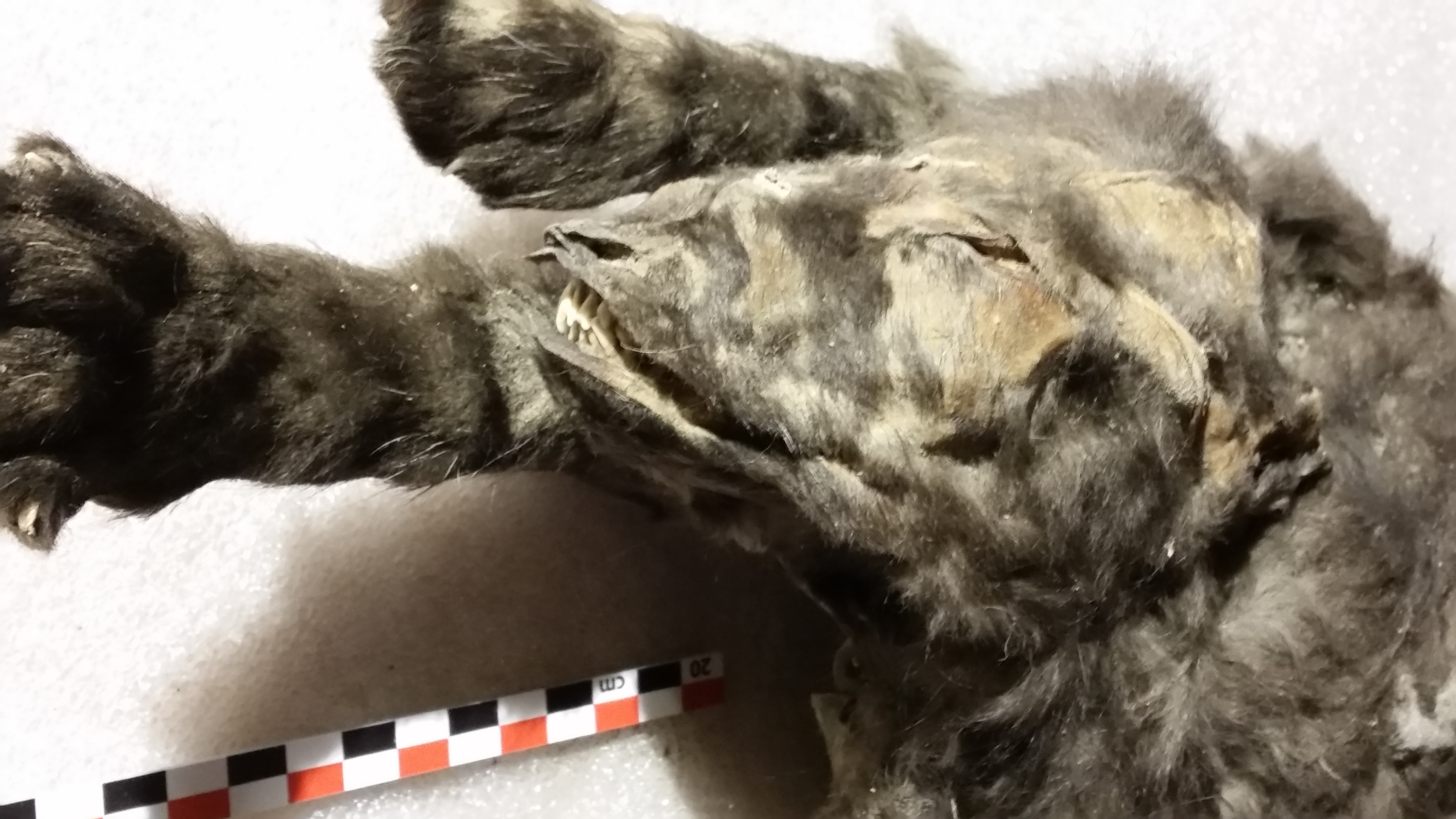When two “puppies” were recovered from the Siberian permafrost, perfectly preserved like prehistoric popsicles, they were initially believed to be early domesticated dogs. However, new research has revealed they were actually red-blooded wolves. Even more remarkably, scientists discovered that these Ice Age pups dined on woolly rhinoceroses, an unexpectedly formidable prey for a small canine.
One of the Tumat Puppies was recovered from the permafrost in 2011 by mammoth ivory hunters from Tumat, a remote village in Northern Siberia, while the other was discovered during an excavation of the same site in 2015.
Now, an international team of scientists led by the University of York has had the opportunity to study the two perfectly preserved specimens, uncovering some surprising revelations about their lives.
Genetic analysis showed that the cubs were female siblings from the same litter that lived around 14,000 years ago. Based on their teeth, it’s estimated they died when they were just seven to nine weeks old.
The puppies were found preserved in frozen layers of soil near the bones of woolly mammoths, some of which appeared to have been burned and cut by humans. This raised the possibility that the pups had a close connection to humans, perhaps as early pet dogs or wolves that were learning to stay close to human activity for food in the initial stages of domestication.
However, this doesn’t seem to be the case. DNA testing shows that the cubs most likely belonged to a wolf population that eventually died out and had little relation to today’s domestic dogs.

Big stretch: One of the wolf cub siblings uncovered near Tumat.
Image credit: Mietje Germonpré Royal Belgian Institute of Natural Sciences
Another key reason why they were suspected to be domesticated dogs was their black fur, a distinct coloration that’s caused by a genetic mutation that’s only found in dogs today. However, it appears the Tumat Puppies were an exception.
“Whilst many will be disappointed that these animals are almost certainly wolves and not early domesticated dogs, they have helped us get closer to understanding the environment at the time, how these animals lived, and how remarkably similar wolves from more than 14,000 years ago are to modern day wolves,” Anne Kathrine Runge, study author from the University of York’s Department of Archaeology, who analyzed the cubs as part of her PhD, said in a statement.
“It also means that the mystery of how dogs evolved into the domestic pet we know today deepens, as one of our clues – the black fur colour – may have been a red herring given its presence in wolf cubs from a population that is not related to domestic dogs,” added Runge.
An especially interesting part of the study saw the researchers analyze the stomach contents of the pair. Along with evidence of plants, their guts contained the tissues of a woolly rhino, an extinct horned species that inhabited northern Eurasia during the Ice Age.
“The hunting of an animal as large as a woolly rhinoceros, even a baby one, suggests that these wolves are perhaps bigger than the wolves we see today, but still consistent in many ways, because wolves still tend to hunt easy prey while some of the pack is engaged in cub rearing,” said Dr Nathan Wales, study author from the University of York’s Department of Archaeology.
There was once hope that the Tumat Puppies might be the long-sought remains of an early domesticated dog, a potential missing link that could shed light on the origins of our bond with “man’s best friend”. Unfortunately, that isn’t the case. Nevertheless, these frozen canines have their own story to tell, offering fascinating insights into the lives of ancient wolf populations that roamed the Ice Age tundra.
The new study is published in the journal Quaternary Research.
Source Link: Ice Age Puppies, Preserved In Permafrost For 14,000 Years, Turn Out To Be Wolves